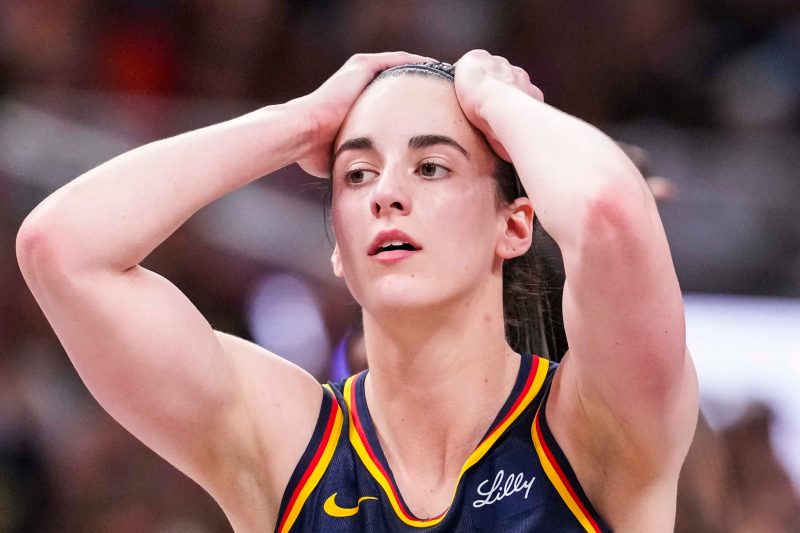John Kopecky, a salesman in Colorado Springs, Colorado, had grand plans for this coming weekend. He paid about $3,000 for flights, hotel rooms and four tickets to take his wife, 14-year-old daughter and her basketball teammate to Caitlin Clark’s game May 30 against the Connecticut Sun in Indianapolis.
On May 26, Kopecky read on social media that Clark had a strained left quadriceps and would be out for at least the next two weeks. He spoke to his wife and they decided right then and there to cancel their flights and hotel rooms, give their tickets to a friend in Indianapolis and look at the Fever’s August schedule for another game to attend.
“Once I found out Caitlin wasn’t playing, it didn’t make sense for us to fly to Indianapolis,” Kopecky said in a phone interview. “We are Caitlin fans before Fever fans. She’s the biggest draw − that’s who the girls want to see. That was the whole point of going to Indy: seeing Caitlin Clark. When she was injured, we thought, ‘Let’s just postpone until August.’”
Kopecky and his family are not alone. Ticket prices for the next four Fever games on the secondary market are plummeting as fans as well as the WNBA itself begin to grapple with the reality that the biggest draw in the history of women’s basketball, and one of the greatest attractions in all of sports, men’s and women’s, will not be around for awhile. It has happening most dramatically with tickets for the June 7 Fever-Sky game at the 23,500-seat United Center in Chicago, where Clark is such an overwhelming draw that ticket prices have fallen more than 300% in less than two days.
I can personally confirm the pronounced change in interest in Fever games without Clark. A week ago, I bought four tickets on StubHub to take my sports-playing nieces to the Fever-Washington Mystics game in Baltimore. Tickets in the same row are now going for less than half of what I paid. I could only imagine what they would cost by game time. Perhaps they’ll be giving them away. And yes, we are still going to the game.
Ironically, the reason the game is being played in Baltimore is because the Mystics decided to move it from their 4,200-seat venue in Washington to the 14,000-seat CFG Bank Arena to make as much money from Clark’s presence as possible. Massive Capital One Arena, which Clark and the Fever sold out twice last season, including the largest crowd in WNBA regular-season history, 20,711, is undergoing renovations and is unavailable, hence the trip to Baltimore.
We’ve got women’s sports covered: Sign up for USA TODAY’s Sports newsletter.
The superlatives never seem to stop for Clark, but one stunning statistic stands out above the rest. In Clark’s record-breaking rookie season last year, the Fever’s average home attendance was by far the highest in the league: 17,036. It also was better than the average home attendance of five NBA teams in the 2023-24 season: their hometown partner Indiana Pacers, the Atlanta Hawks, the Washington Wizards, the Memphis Grizzlies and the Charlotte Hornets, according to my upcoming book, ‘On Her Game: Caitlin Clark and the Revolution in Women’s Sports.’
You read that right. Clark and the Fever beat five NBA teams in average home attendance. Before her arrival in the WNBA, this kind of statistic would have been unthinkable. So, for those who want to continue to minimize Clark or her historic impact on the league and throughout women’s sports, consider that as she attracts people who never before watched women’s basketball, she helps shine a light on so many players in a league that is 74% Black or mixed-race − players who never received the attention or recognition they deserved from the male-dominated sports media, as well as a vast swath of the American fan base, until she arrived.
TV viewership, always sky-high for Clark’s games, probably will take a hit as well. In the 2024 regular season, of the 23 WNBA games to reach at least 1 million viewers, 20 of them featured Clark. According to Fox Sports, Clark’s games averaged 1.178 million viewers; all other games averaged 394,000. This is why 40 of the 44 Fever games are on national TV this year, the most of any team in the league.
All of this illustrates the significance of the news about Clark. This is not just another player getting injured; this is the WNBA’s top financial driver who is now unavailable to play, promote and sell the league, for a couple of weeks at least.
In December 2024, The Indianapolis Star reported that Clark was responsible for 26.5% of the WNBA’s league-wide activity during the 2024 season, including attendance, merchandise sales and television, according to Dr. Ryan Brewer of Indiana University Columbus. One of every 6 tickets sold at a WNBA arena could be attributed to Clark, said the Star, part of the USA TODAY Network.
That is just how crucial Caitlin Clark is to the WNBA. You would think the league might acknowledge the moment. But so far, no. Asked three times for a comment on Clark’s injury and what it meant to the league, a WNBA spokesman never replied.
Editor’s note: Christine Brennan’s book, ‘On Her Game: Caitlin Clark and the Revolution in Women’s Sports,’ will be published by Scribner July 8.






